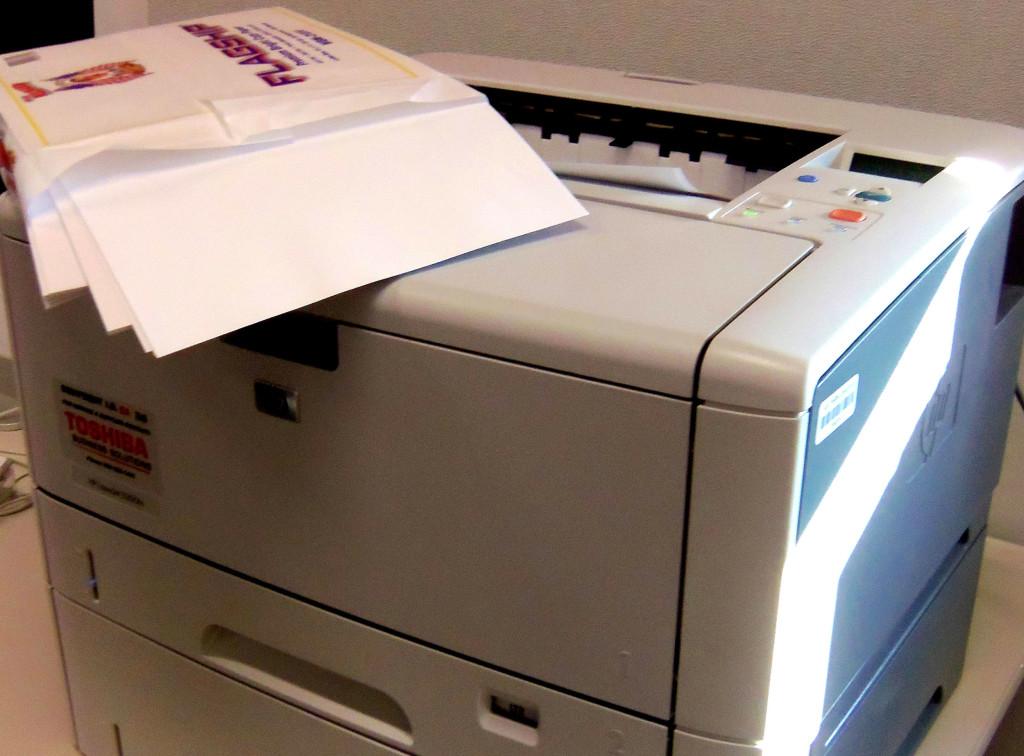Changes to Printing Policy Create Hassles for Students
Most printers in the building are now off limits to students.
In an attempt to “go green” this year, Southern Lehigh administration has implemented a new printing policy that prevents students from wasting paper.
Under this new policy, students are not permitted to use classroom printers. If they need access to a printer, they must get permission from and email the document to a teacher, who in turn prints the document for the student.
While the amount of paper wasted last year does factor into the decision to implement this new policy, it wasn’t the sole reason behind it. The ultimate intention is that documents will be submitted electronically.
“Most schools have gone green,” Mr. Erik Malmberg, Coordinator of Network & Information Systems, said. “So, being that we are usually on the lead with technology, we are trying to use a cloud-based system that allows [teachers] to grade digitally, by the [Spartandocs] drop-off box or Blackboard.”
The new printing policy is seen as a long-term solution to the waste of paper in the district as well as a technological advancement at Southern Lehigh.
“It’s going to curb unnecessary printing,” systems technician Mr. Josh Ludwig said. “It is also seen as a cost saving measure.”
Despite the technical benefits of the policy, the students, in practice, have been hesitant to accept the new system.
“The majority of the time I saw [last year], kids weren’t printing out nonsense; they were printing actual work,” senior Gemma Malone said.
One complaint over the new policy has been that students who previously used the printers responsibly are now hindered from printing when they are required to.
The new policy “makes printing out stuff you need difficult, because of having to go through emailing a teacher to print something out,” Malone said, “and also because the printers are scattered in random classrooms rather than the halls.”
This is also an issue for students who may not have printing access at home.
“I think that as a school it’s their job to support our learning,” junior Cara Schiavone said, “and part of our learning is printing notes and projects without being inconvenienced and needing to remember to print them at home.”
Malone feels that the need to work through a teacher in order to print in class causes tedious classroom distractions.
“Instead of saying, ‘Can I go pick up what I just printed?’ we have to go, ‘Can I email you something, so you can send it to the printer and I can go figure out where it ended up?’” she said.
Students may work around this system by printing in the library, but the walk to the library takes up more class time than merely walking to the hallway printers. Also, students without study halls have fewer opportunities to get to the library.
Another point against the new policy is that we already have the printing technology, and letting the printers sit useless seems wasteful.
Overall, the new printing policy is a great idea to save money and be more environmentally friendly. However, teachers and students at Southern Lehigh are not yet fully adapted to a paperless system. Until we have completely moved away from submitting paper documents, we should make printing more easily accessible.

Anna Simoneau was a member of the Spotlight staff for two years, contributing as a staff reporter, assistant photo editor, and photo editor. During...


